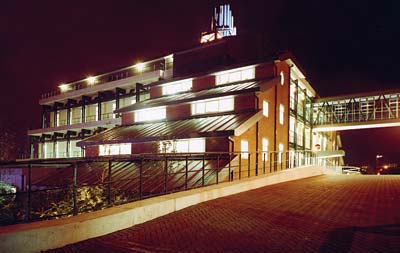
 Integrative
Biology - the Epitheliome Project
Integrative
Biology - the Epitheliome Project
Rod Smallwood, Jenny Southgate, Sheila Mac Neil, Mike Holcombe, Rod Hose, Richard Clayton, Rob Gaizauskas
Jack Birch Unit of Molecular Carcinogenesis, Department of Biology, University of York

 Integrative
Biology - the Epitheliome Project
Integrative
Biology - the Epitheliome Project
Rod Smallwood, Jenny Southgate, Sheila Mac Neil, Mike Holcombe, Rod Hose, Richard Clayton, Rob Gaizauskas
The Epitheliome Project started in October 2001 when we began to use software agents as computational models of biological cells. The initial work (by Dawn Walker) was funded as part of an EPSRC Platform Grant (Rod Smallwood, Jenny Southgate, Freddie Hamdy and Mark Meuth). In 2005 we received substantial funding from EPSRC to continue the project (Rod Smallwood, Mike Holcombe, Jenny Southgate, Sheila Mac Neil, Richard Clayton, Rod Hose, Peter Hunter, and Rob Gaizauskas). A number of associated projects on cell signalling, re-stenosis in coronary arteries, and the microbial response to oxygen have been funded by BBSRC and EU FP7, and follow-on proposals have been submitted.
This web site provides background material on the Epitheliome Project, including a couple of unpublished papers which show how my ideas about modelling cellular interaction developed between 2003 and the end of 2009; a list of published papers; the names of everyone who has worked on the Project; and details of the software framework (FLAME) which we developed for the modelling.
A cell-centred approach to modelling the behaviour of epithelial tissues has allowed us to explore the development of properly structured and functional tissue, and to look at the response of the tissue to insult such as wound healing. The behaviour of the individual cell in its mechanical and biochemical environment is central to these issues, and it seems self-evident that an exploration of cellular behaviour has to start from a model of the individual cell and its interaction with the environment. Physiome models in general do not encompass development - they are a snapshot of the behaviour of the system at a particular point in its development, and are unable to provide insight into either the processes that lead to the current state or future changes (the prognosis). My contention is that our modelling of cellular behaviour can provide this developmental perspective, and the tools we have developed allow our cellular models to be embedded in continuum models of tissue behaviour. The missing link is that between transcriptomics and cellular behaviour, and we have been developing this link.
Whilst the outputs from the Epitheliome Project have been fully described in the listed publications, the more general issues of how my thinking developed, and where we should be going in future, have only been explored in presentations. This background is provided by two papers, both of which were invited papers following conferences, which were not published (perhaps because they did deal with less concrete issues!). The first of these (Modelling emergent order: from individual cell to tissue) was written in 2003, shortly after the first paper (Walker et al 2004) on the epithelial model was submitted for publication. The second (Multiscale, multi-paradigm modelling of tissues: embedding development in tissue behaviour) was written late in 2009 following the IUPS meeting in Kyoto and presents my views on how development could be incorporated in physiological models.
We have published a long list of papers in both technical and biological journals.
Eighteen people have worked on the Epitheliome Project since its inception in 2003.
